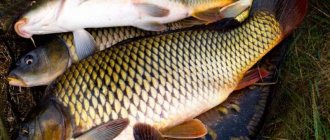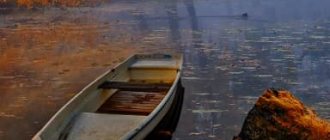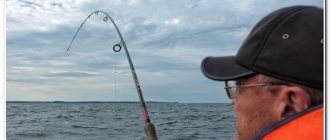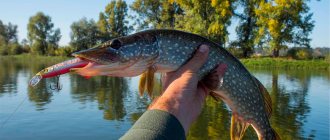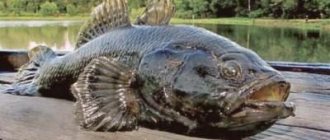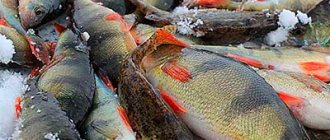Description
Rybets (or Syrt) is a freshwater and semi-freshwater fish of the carp family.
The body of the fish is elongated, but quite wide. Color changes depending on the season and life cycle.
From early summer until late autumn, the body is metallic gray with a blue tint, gradually becoming lighter in color towards the belly. And only the ventral and gill fins have a reddish tint.
But during the spawning period, the fish transforms. The back becomes almost black, and the sides and belly acquire a bright color ranging from orange to purple. Males have characteristic bumps and dots on their backs.
The head is triangular, oblong. The mouth is slanted and retractable.
The main distinguishing feature of the fish is its nose.
It is large, fleshy, takes up most of the head and almost completely hides the mouth.
The dorsal fin is short and high. The tail has a clear v-shape. The pelvic and gill fins are small and pointed.
Most often, individuals are found up to 30 cm in length and weighing up to 500 grams, but under good conditions they can grow up to 50 cm and weigh 2 kg. Maximum life expectancy is 17 years.
Behavior and nutrition
The semi-anadromous and anadromous lifestyle determines the seasonal migrations of the fish. Fish enter the Kuban River from coastal areas in late autumn with still unripe eggs.
It begins moving to other rivers in early spring just before spawning. Upstream, flocks of syrti go all the way to the stormy mountain sources.
Having finished spawning in mid-summer, the fishermen migrate back to their habitats in coastal areas and low-salt estuaries. It feeds there until late autumn.
It eats animal products: insect larvae, plankton, small crustaceans. He does not disdain plant foods.
During the summer feeding period, it likes to graze on the sandy bottom at medium depths. With the onset of autumn cold weather, fishermen (except for Kuban populations) go to the depths, where they look for underwater holes and depressions with a slight current. Here he continues to feed until spring.
Habitats
Although the reservoirs of Central Europe are considered to be the birthplace of syrti, in some countries (Spain, France, Italy) this fish is not found at all today. But in our country, fisherman can be caught in many regions of the southwestern and southern parts of Russia.
A large population of syrti lives in the Gulf of Finland, as well as in Ladoga and Ilmen, Neva and Narva. The small fish is found in the Dnieper and Dniester. The Caspian subspecies is found in the Volga, and the small Black Sea fisherman lives in the Kuban.
Photo 1. In the open space of a small river.
Spawning
The start time of spawning depends on latitude - the further south the body of water, the earlier spawning will begin. The same applies to the age of fish maturation - in warmer latitudes, fish fish become sexually mature at 3 years, in cold latitudes - at 5-7 years.
At the end of autumn or beginning of spring, fishermen leave their feeding grounds and go upstream. Its target is rocky rifts at the headwaters of rivers up to a meter deep. The fish come here in small groups.
The females, standing against the current, slowly spawn eggs, which are attached to the stones and gravel at the bottom. Spawning occurs only during daylight hours. During the spawning period, the female lays eggs 2-3 times.
The egg bed can hold from 30 to 120 thousand eggs. The incubation period is 3-7 days. Already on the 12th day after hatching, the fry begin to feed on their own. A month later, having reached a length of 2-3 cm, the fish begin to slide downstream in small schools.
Diseases and parasites
Like any other fish, the fish is characterized by various viral and parasitic diseases, such as post-diplostomiasis, opisthorchiasis, clonorchiasis, nanophyetosis and ligulosis.
But do not confuse possible signs of infection with mating color during the spawning period, when the fish are greatly transformed, become brighter, and the males are decorated with tubercles and become rough.
It should be remembered that even healthy-looking fish must be carefully processed before being eaten.
Source: blogribaka.ru
| Rybets - one of the most popular fish in the south, incredibly tasty. But even in May, in the Rostov region, not everyone catches it, although in recent years, due to intensive fish farming in many pond farms and fish hatcheries, the fish population has increased significantly. Hunting for small fish differs in many ways from catching widely available fish, and primarily in that it bites best in the pre-winter and winter periods. As soon as the water temperature reaches summer values, it either rolls into the sea or accumulates in the pre-estuarine spaces. Fishing for it begins in the Don closer to August and mainly from the river fairway. They are caught mainly with ring gear, at depths of 5 to 10 m. In the summer heat, fisherman hang on to the riverbed edges , rich in oxygen. Like any Centophagus, the fisherman examines these edges with its lower mouth in search of food. A school of fish grazes on the ledges of the bottom, in places where something edible may be found. Closer to autumn, when the water gets colder and near the coast, schools of fishermen approach them, and guide fishermen who know this feature catch them with lighter float tackle, if 6-10 gram floats can be called such The fisherman is afraid of the boat at depths of less than 3-4 m, there, in the water that has brightened by autumn, he sees from afar the shadow of a boat in sunny weather. therefore, the length of the float often exceeds 10 m. It prefers a bottom that is not silted, but also not too clean, as on sandy beaches. The most promising bottom for fishermen It is considered clayey, with a light sandy coating, with small banks made of shell druses. In southern rivers, such microbanks consist mainly of three types of bivalve mollusks - zebra mussels, toothless and pearl mussels, and gastropods - meadows. All of them, to some extent, also constitute the food of the fish, but only until they are still not very old and their small valves are easily susceptible to pharyngeal teeth. Between the drusen of shells there is always a lot of food, which attracts various bottom fish, including fish. In spring and autumn, at depths of 4-5 m, small fish can be caught using a wire, but even here it is not easy to catch. Any incorrectly constructed equipment scares him. A slightly faster immersion of the bait due to an unsuccessful placement of the sinkers when braking in the current can alert him, and then even his most favorite bait - maggot or crayfish meat - will not tempt him at all. Sometimes you can guess his current mood about food right away, but sometimes you have to waste half a day searching for the right montage. Specialists in fishing for small fish in the wiring very little. This is true fishing art. Despite the vast experience of catching it, you can leave the reservoir with nothing, without understanding what’s the matter, why today the fisherman is especially obstinate... When the water temperature is 1-2°C in December, fishermen in large rivers go to extreme depths, adhering to such sharp edges that it is almost impossible to find them without an echo sounder, or if you do not know all the bottom differences up to a meter. You can stand all day 2-3 m from a school of fish and only one or two fish will separate from the school in half a day, reacting to the best bait. Imagine: this happens during the main fishing period for small fish , from November to the end of March, until it began to rise up the river to its shallow spawning grounds in the tributaries. A “section” with an echo sounder gives approximately the following picture of a deep river channel - from the shore there is a gradual drop of up to 10 m at a distance of up to 30 m from the coastline, then holes are drawn up to 15-17 m, and the diameter of a hole with a depth of 17 m is only 3-4 m It is in it that fish will constantly accumulate, going to the hole along the river from below. The question involuntarily arises: “Why doesn’t she take it on the approaches to the pit?” Yes, because the fisher simply does not feed until it reaches its feeding station, to which it approaches at half-water, without reacting to anything. Only after finally reaching a depth of 16-17 m (or at least 10 m on other channels) with a suitable bottom, the school will stop and begin feeding. In the coldest time - in January - he is not tempted even by the maggot he so loves, and then the only bait that he definitely will not be afraid of will be bloodworms. And if you find a flock, both a “ring” and a feeder work well. But then the bite subsides, and then stops altogether. Something alarms the school, a search begins for the reasons why this happened, experiments in restructuring the gear begin. And one of them is determining the optimal leash length, which can sometimes be simply incredible. One day I watched as a fisherman standing nearby extended the leash to... 5 m! And if before this he had not had any bite, then the fish suddenly began to take the bait carried far away by the stream, as in the spring-autumn case when the float was released up to 15 m from the boat. But a boat standing over a 17-meter hole should not frighten a school of fish. So it's fish The very appearance of the feeder is alarming. At what distance does it no longer scare the flock? You have to use several hooks located every meter, and this helps to finally determine the length of the leader at a given time of feeding of the fish. Sometimes it is useful to replace the bait, replace the bloodworm with crayfish meat or shrimp, which are often more effective than local crayfish due to the specific sea odor. So, we accurately, down to the meter, calculated the location of the school of fish, determined the length of the leash by tricks to determine the distance at which it feeds at a given time, and finally found a suitable bait, but this does not mean that the fishing will be successful. This is the time to remember one old method of catching small fish, which was known to us twenty years ago, when the winter was quite warm and there was no ice on the river. At that time, ring tackle was just being mastered on the Don. One of my fishermen friends then used a rig with three short hard leads on the main line, the final one was a small sinker with variable weight, barely reaching the bottom in the current. The sinker was placed as light as possible, to give delicacy to the entire tackle, and only with this condition did the fisherman take the bait. Simple small “ovinka” jigs played the role of a fry or an insect holding a bloodworm in its mouth. The only insect suitable for this role was the smooth bug, which has a similar shape - it can sometimes be seen in the stomachs of fish fish . The druses of shells also contain bloodworms, small caddisflies and amphipods, which can also be imitated by jigs. They were placed on short leashes about 5 cm long - 20 cm from the bottom sinker and above with a gap of 20 cm. And the fisherman pecked at such tackle. Remembering that fishing trip, we also decided to use equipment with jigs , and it worked better than the simple hook rig. From the magazine FISHER 5-11-2011, 15:11
|
Source: www.ryblib.ru
What bait to use
This is a strategic issue that the angler should decide before fishing begins. And again, the conflict comes between the fish’s low metabolism in cold water, plus its natural caution on the one hand, and the angler’s habit of fishing in the summer, on the other. It was at this stage of preparation for fishing that I hit the greatest number of bumps. And the main problem was precisely my habit of feeding fish in the summer. Over the course of several summer months, a stable pattern is developed to use a specific composition of dry bait mixture as bait. In autumn, the food activity of fish quickly declines, and the pattern continues to work on a subconscious level.
The realization that I was doing something wrong most often came to me after several unsuccessful fishing trips. The most significant mistakes at this stage were incorrectly selected: the composition of the bait, the size of the fraction of feed particles, the color of the bait mixture, its inertness and smell. Moreover, all these errors, except for color and smell, were impossible to correct promptly.
Many fishermen rarely pay attention to the composition of bait. But in vain. If the bait is too nutritious and contains a large amount of biscuits, in the fall it will simply quickly saturate the fish even before it gets to the hook with the bait. Too poor bait mixtures, which contain a large amount of ground bran, are also not suitable. They work like sand - and are completely uninteresting for large fish.
For this time of year, it is precisely balanced, weakly nutritious bait mixtures that are needed. Having worked with different manufacturers of bait, both Russian and foreign, I made a sensational discovery for myself: only a few varieties of bait marked “for cold water” or “winter” can be considered corresponding to the stated purpose. Everything else is a cunning advertising gimmick. Of the domestic bait mixtures, I really liked the Minenko bait of the Cool Water series (photo 1) and the “Optimist” bait of the Elite series (but not all of them, only “Black Roach” and “Black Bream”).
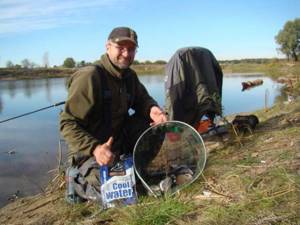
Photo 1
Of the foreign baits, most often in the fall I use Sensas 3000 of the Gardons series (photo 2) and Sensas 3000 of the Matsn series. I also liked VDE bait, but recently it has disappeared from store shelves. All of the above baits work very well for capricious, sedentary fish.
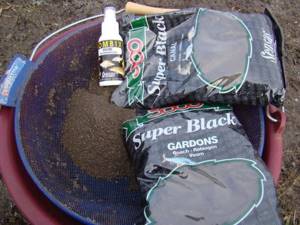
Photo 2
Another “Trojan horse” in the composition of baits for late autumn is the size of feed particles. Logically, if the fish has a poor appetite, it turns out that the smaller the fraction of feed particles, the less they will saturate the fish. But it's not that simple. For example, the same roach or bream in late autumn willingly eat the crumb of white bread or rye bread dough, provided that the feeding is carried out with the same bread or dough.
To call such bait fine-grained is hard to come by. What then to do with the above list? After all, almost all baits in it are small-fraction. And everything is elementary. The principle: what we feed, we catch, has not yet been canceled. And all finely dispersed dry bait mixtures represent a base for increasing the attractiveness of the same bloodworms, maggots, casters or pieces of worms. Without the “little animal” such baits work poorly. I'll say more.
Previously, for faster delivery of white bread soaked in water or pellets of brown bread dough, I used clean soil. Now I like the French Sensas 3000 groundbaits of the Matcn series as ballast more. Balls from moistened bait are molded much easier than from wet sand, and the fish are more willing to stand up for such a treat than on the ground with pieces of bread.
If you do not have the opportunity to buy the above dry bait mixtures, do not worry. You can sift any summer bait through a fine sieve and add a little dark soil to it: best of all is soil taken from under deciduous trees. In combination with an animal element (photo 3) or pieces of bread, this bait also works very well.
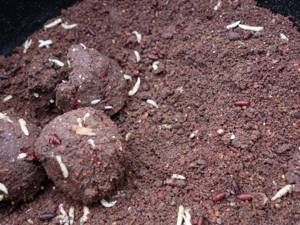
Photo 3
Regarding the optimal inertness of ready-made bait for late autumn, not everything is clear either. And it would be absolutely wrong to give any specific advice. It seems that in cold water inert bait should be a better option, but not always. It all depends on the mood of the fish - and every time you have to adapt to it. At home I try to prepare a light bait mixture, but well soaked in water, and when I go to a pond I take with me about a glass of dry bait mixture and about a liter of dry soil. Suddenly the bait mechanics will have to be adjusted.
But the influence of the color and smell of the finished bait on the activity and number of bites is secondary. You've probably noticed that most of the baits on my list are dark. Yes, for autumn fishing I love dark baits, but I also know people who don’t think about the color of the prepared bait mixture at all - and fish well with what they can buy in the store. And if it is really necessary, then darken the bait with earth.
I experimented a lot with smells, and as a result I came to the conclusion that there would be bait with fruity or coriander notes in the aroma - there is not much difference. I have had the opportunity to fish quite successfully with carp bait mixtures that have a fruity smell. The only thing you should definitely avoid in the fall is strong odors.
Tackle for catching small fish: what is used to catch it in the fall
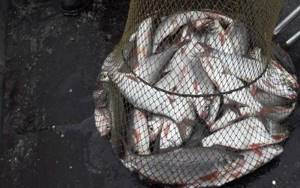
On the Don there is a ban on the use of such equipment as a ring. If you are a beginner and read somewhere that “ringing” is the best way of fishing, do not rush to do it. The fines are large, and it is more profitable to be a law-abiding fisherman, especially since there is legal fishing gear that is no less catchy - fishing eggs. The principle of operation is similar, but it is considered to be more humane. It’s strange, but true – you can catch small fish on the Don with eggs, but not with a ring.
In the spring, the highest activity of the fishermen, called rybchik on the Don, coincides with the fishing ban, which is why fishermen look forward to autumn with such impatience. But at this time the fishery inspection makes sure that the fishing gear for fishing is not poached; on the Don in the fall there are restrictions related to the proximity of hydraulic structures, this must also be taken into account when choosing a fishing spot.
One of the promising places in the lower reaches of the Don is considered to be the non-navigable channel of the delta. Landmark - the width of the river here is less than in other areas. If you are in those places, local fishermen will definitely offer a trip to Rogozhkino. There are always a lot of people here. Experienced comrades go fishing in the evening in order to have time to take a good place. It will be difficult to do this in the morning.
Fish in the fall is caught on:
- Fishing eggs (lead cheeks);
- Feeder;
- Into the wiring.
The gear, which is more often called “fishing eggs”, is known in some places as lead cheeks. It is used on the Don for catching small fish and bream.
In autumn, as the water gets colder, the fisherman comes closer to the shore, which makes it possible to use float gear. But this only applies to early autumn. Later, at real autumn temperatures, the fisher will move to a depth that is uncomfortable for fishing from the shore, and then the Bolognese tackle will be available only to those who fish from a boat. The exception is fishing from the embankment. Here, those who like to go fishing with a float stay until the very frosts.
When fishing from a boat, bites, as a rule, occur at a distance of 10 meters from the craft, since clear water forces the fish to stay away from an object that poses a danger. The shadow from the boat is especially annoying when fishing in clear sunny weather. On such days, the float should be released further away. The bite of the autumn fish is powerful, but you need to hook it carefully, since its lip is weak and can easily be torn off.
Since the fish is cautious, when fishing on a feeder, a meter-long leash is used, but there are exceptions when the bite begins only after the leash is shortened to 30 cm. To reduce the number of trips, it is recommended to use a feeder gum.
Artificial baits for catching fish
Today, quite a lot of artificial bloodworms and maggots are produced, which are actually no different, at least the fish definitely don’t distinguish them from natural ones. With this kind of fishing, when the bait moves quickly, the fish simply does not have time to make out that what is in front of it is not a natural bloodworm, and simply swallows it.
We use artificial maggots from the Berkley company as bait, which fits perfectly on the hook, is silver in color with a disgusting smell, but the fish like it.
Fishing technique
The technique of catching a small fish is determined not even by its habits, but by anatomical features that are not typical for all cyprinid fish - the shape of the mouth. Its mouth is in the form of a trunk; it uses it, like a vacuum cleaner, to collect various bugs and other aquatic inhabitants from the bottom. So, a fisherman, unlike other fish, cannot quickly grab the bait. In principle, when fishing in a current, it is difficult for any fish to keep up with the bait and grab it the first time, and for a fisher it is doubly difficult. Therefore, the fishing technique is such as to make it as easy as possible for the fisherman to grab the bait.
The cast is made, and the wiring occurs as follows: the float is held by the rod, that is, the reel practically does not work here and the wiring is done with short stops.
As a rule, at the moment of stopping, the fisherman approaches the bait and begins to pinch it. At this point, it's best to add a little slack before hooking. It is believed that this makes it easier for the fish to swallow the bait. After which a fairly sharp, powerful hook is made. They hook at any change in the movement of the float, and this leads to very good results.
Despite the change in weather, the fish were biting almost all day with varying success. But the fisherman is a schooling fish and he moves back and forth across the pond. You just need to get into the pack, and then luck is guaranteed. We safely release the next fish we caught. Autumn fishing worked out. I was pleased with the strong and beautiful fish, which means everything was done correctly.
Groundbait and bait for small fish in autumn on the Don
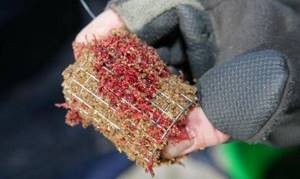
The taste preferences of fishermen change not only depending on the water temperature in the fall, but also on the fishing location. When within the city limits of Rostov-on-Don it responds only to shrimp, near Novocherkassk it is quite successfully caught using maggots. So, baits for fisherman:
- Maggot;
- Cancer cervix;
- Shrimp;
- Worm;
- “Sandwich” maggot and bloodworms;
- Scented foam balls.
The best bait for catching autumn Don fish is considered to be raw crayfish meat. The neck is cleared of the shell and placed in a container of water, which is placed in the refrigerator.
In order for the prepared necks to acquire the desired consistency, they are kept in a jar of salted cold water, so they will become harder and will stick well to the hook. Alternatively, use a rubber band for pellets to secure the bait.
Regardless of the time of year, maggots work great. The larvae are planted in a bunch. The shrimp is covered with maggot so that it holds better; it is included in the sandwich. The sandwich uses live mosquito larvae and artificial bloodworms. Sometimes artificial ones perform better than natural ones. You have to try everything.
To plant crayfish, you need to get it; it’s much easier to buy shrimp. Increasingly, it is replacing the traditional nozzle. There is no need to cook the shrimp; they are already completely ready to be hooked. Before fishing, it is advisable to defrost them in advance, drain the released water and hold it for a while at room temperature so that the meat dries out a little.
Ready-made feeder baits from some manufacturers include mixtures designed specifically for catching small fish, for example, Mironov. The degree of moisture depends on the strength of the current. As a rule, in the second half of autumn, the water level in the Don drops, the current becomes stronger, and the bait is made more viscous.
Features of catching Don fish
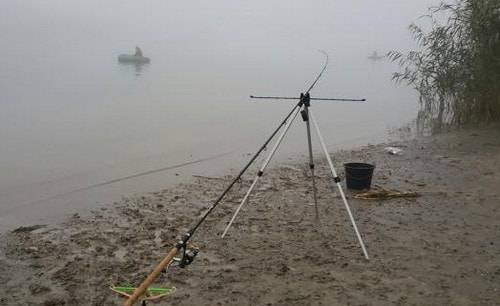
By mid-October you can already seriously prepare your gear. The rumor that the fisherman has “gone” spreads quickly among fishermen. In autumn, migration to the lower reaches begins, but the migration of this fish takes place in winter, when the river is frozen. The January and February Don fish are the largest. It is caught with ordinary winter gear, using maggots, bloodworms or frozen crayfish meat as bait.
Since this is a schooling fish, when biting small individuals, large specimens are very rarely caught. The big one may be nearby. It happens that one person comes across only small things, while the other catches only good fish. You need to cast downstream from the accumulation of small fish, since the more cautious large fish are content with picking up food after the young fish. The fisherman always stays on the stream, you need to look for him there.
The versatility of the tackle and bait does not exclude the fact that catching the desired fish will not bring in the fall bycatch bream, silver bream or large bleak, which is called sybil on the Don. That's what fishing is for, to give us fishermen surprises. If you want to get inspired before your trip to the river, watch an interesting video from Rogozhkino.
Source: SamRybak.ru
Fishing for small fish on the Don in autumn
Methods of catching syrti
The fisherman prefers a bottom-dwelling lifestyle. The main food for it is benthos - organisms living in the soil of a reservoir. The methods of catching this fish are also connected with this. First of all, these are bottom and float gear. When fishing from a boat, it is possible to use onboard fishing rods and ring-type equipment. Catching fish with winter gear is also popular, but depends on the region. Syrta, like other cyprinids, can be caught by fly fishing using imitations of invertebrates (nymphing). From most small rivers, in the fall, the raw material flows into the sea or into lakes and reservoirs for wintering and feeding. Catching syrt with a float rod Syrt is a very cautious fish, reacting quite sensitively to rough or incorrectly adjusted equipment. When fishing with float rods, it is worth considering the most minor nuances. Features of using float gear for catching raw fish depend on the fishing conditions and the experience of the fisherman. For coastal fishing for small fish, rods for “dead” equipment with a length of 5-6 m are usually used. For long casts, match rods are used. The choice of equipment is very diverse and is limited by fishing conditions, and not by the type of fish. As already noted, the fish is capricious, so delicate equipment is required. As in any float fishing, the most important element is the correctly selected bait and bait.
Fishing for syrti using bottom gear
The cheese responds well to bottom gear. Fishing with bottom fishing rods, including feeder and picker, is very convenient for most, even inexperienced fishermen. They allow the fisherman to be quite mobile on the reservoir, and, due to the possibility of targeted feeding, to quickly “collect” fish in a given place. Feeder and picker, as separate types of equipment, currently differ only in the length of the rod. The basis is the presence of a bait container-sinker (feeder) and replaceable tips on the rod. The tips change depending on the fishing conditions and the weight of the feeder used. The bait for fishing can be any bait, either of plant or animal origin, as well as pastes and boilies. This fishing method is available to everyone. The tackle does not require additional accessories and specialized equipment. This allows you to fish in almost any body of water. It is worth paying attention to the choice of feeders in shape and size, as well as bait mixtures. This is due to the conditions of the reservoir (river, lake, etc.) and the food preferences of local fish.
Catching cheese with winter gear
The fisherman does not spend the winter in all rivers. Most populations of this fish migrate to larger bodies of water. However, in the case of winter fishing, for example on the Don, catching small fish in winter can be very exciting. The fish is caught using traditional equipment: nodding jigs, floats and bottom ones.
